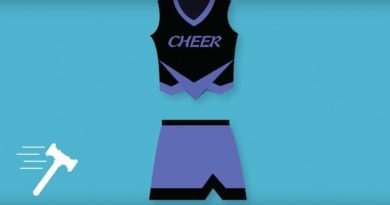Practical Guidance on How to Use This Rare but Useful Tool
“Despite the America Invents Act having established the PTAB over a decade ago, applications for PTAB subpoenas have been relatively rare, [but] they can be useful to obtain key discovery in PTAB proceedings.”
The Patent Trial and Appeal Board (PTAB) remains a popular and busy venue for post-grant review of patents. These proceedings are known for being faster, and by statute, they allow for less discovery than district court patent cases. PTAB litigants therefore may not think about potential third-party subpoenas, which can take significant time and effort to obtain. It is possible, however, to obtain a subpoena in a PTAB case. In certain circumstances, a PTAB subpoena can be a useful tool to bolster your case at the PTAB, but there are specific procedures that must be followed to properly issue and enforce such a subpoena. Precise compliance with these procedures is necessary to obtain the discovery sought.
Practical Uses for PTAB Subpoenas
PTAB subpoenas can be used in a variety of ways. For example, if a critical witness, such as an inventor, is no longer under the control of the Patent Owner, a PTAB subpoena may be used to compel testimony needed. See Mitsubishi Plastics, Inc. v. Celgard, LLC, IPR2014-00524 (Paper 44) (Apr. 13, 2015) (permitting subpoena of Patent Owner’s witness who left Patent Owner’s employment). Third-party discovery may also be appropriate, for example, to determine who is a real-party-in-interest (RPI) to a PTAB proceeding. See Farmwald v. Parkervision, Inc., IPR2014-00946 (Paper 36) (June 9, 2015) (permitting motion for subpoena regarding RPI issue, though motion ultimately was not granted). Subpoenas may also play a role where the evidence to establish certain dates is in the possession of a third party, such as if a petitioner seeks to establish the publication date of a document prepared by a third party. See Coastal Indus., Inc. v. Shower Enclosures Am., Inc., IPR2017-00573 (Paper No. 27) (Feb. 20, 2018) (granting subpoena to Internet Archives employee regarding date issue).
PTAB Subpoenas Are Rare
Despite the America Invents Act (AIA) having established the PTAB over a decade ago, applications for such subpoenas have been relatively rare. Searches on Docket Navigator show than two dozen such requests relating to third party discovery the last three years, despite over 1,000 PTAB matters being filed each year. Moreover, there is a dearth of federal court caselaw on the subject. As Magistrate Judge Donahue in the Central District of California recently observed, some circuits (including the Ninth Circuit) have never dealt with the statute under which PTAB subpoenas may be issued, 35 U.S.C. §24. Waterdrop Microdrink GmbH v. Qingdao Ecopure Filter Co., Ltd., No. 2:23-MC-00123-JLS-PD, 2024 WL 277461, at *4 (C.D. Cal. Jan. 18, 2024). And much of the limited caselaw regarding this issue arises in the context of Trademark Trial and Appeal Board (TTAB), not PTAB, proceedings.
This lack of authority on this issue makes it imperative for practitioners to ensure they strictly comply with the statutory requirements for obtaining a PTAB subpoena. With the compressed schedule of PTAB proceedings, any error can lead to delay and may result in missing the opportunity to obtain the discovery before a PTAB filing is due.
How To Obtain A PTAB Subpoena
Step One: PTAB Authorization
Discovery at the PTAB is ordinarily limited to initial disclosures and “routine discovery” consisting of exhibits cited in papers or testimony, cross-examination of affidavit testimony, and “relevant information that is inconsistent with a position advanced by the party during the proceeding.” See 37 C.F.R. §42.51(a)-(b). Otherwise, additional discovery is limited to that agreed between the parties or by motion, wherein the movant shows the additional discovery is “in the interests of justice.” See 37 C.F.R. §42.51(b)(2); 35 U.S.C. §316(a)(5) (discovery in inter partes reviews is limited to deposition of witnesses submitting affidavits and “what is otherwise necessary in the interest of justice”).
A subpoena falls outside of the “routine” discovery permitted; therefore, to pursue a subpoena, the party must file a motion for authorization for the subpoena with the PTAB. See §42.52(a) of the Rules of Practice for Trials Before the Patent Trial and Appeal Board and Judicial Review of Patent Trial and Appeal Board (“[a] party seeking to compel testimony or production of documents or things must file a motion for authorization”). That motion must describe the relevance of the testimony or evidence, as well as the name of the witness or the nature of the document or thing sought. See §42.52(a)(1)-(2). There are additional requirements if the evidence or witness is outside of the United States. See §42.52(b).
In the motion for authorization, the party must show the discovery sought is in the interests of justice. The PTAB looks at the five Garmin factors to determine whether the additional discovery is in the interest of justice. Garmin Int’l, Inc. v. Cuozzo Speed Techs. LLC, IPR2012-00001, Paper 26 at 6-7 (PTAB. Mar. 5, 2013) (precedential). The five Garmin factors are:
(1) whether there exists more than a possibility and mere allegation that something useful will be discovered;
(2) whether the requests seek the other party’s litigation positions and the underlying basis for those positions;
(3) whether the moving party has the ability to generate equivalent information by other means;
(4) whether the moving party has provided easily understandable instructions; and
(5) whether the requests are overly burdensome.
A party seeking a subpoena must be prepared to present compelling arguments on each of these factors in order to obtain authorization for the subpoena from the PTAB.
Step 2: Compliance With 35 U.S.C. § 24
Once PTAB authorization has been obtained for a subpoena, a party’s work is not done. The party must next utilize the federal courts to obtain the subpoena that the PTAB authorized so that it can be served on the third party. 35 U.S.C. § 24 sets forth a specific process by which a party to a PTAB proceeding may obtain a federal court subpoena:
The clerk of any United States court for the district wherein testimony is to be taken for use in any contested case in the Patent and Trademark Office, shall, upon the application of any party thereto, issue a subpoena for any witness residing or being within such district, commanding him to appear and testify before an officer in such district authorized to take depositions and affidavits, at the time and place stated in the subpoena.
After the district court issues the subpoena, the standard provisions of the Federal Rules of Civil Procedure apply regarding the attendance of witnesses and to the production of documents and things. See 35 U.S.C. § 24. The federal court that issued the subpoena also has the power to enforce the subpoena through motion practice. Id.
Notably, while this statute refers only to “testimony,” it is unlikely that documents without testimony would be of any benefit in a PTAB proceeding without authenticating testimony. But at least the Tenth Circuit has held, in a narrow holding, that a separate deposition subpoena is not required to obtain documents. See El Encanto, Inc. v. Hatch Chile Co., Inc., 825 F.3d 1161, 1167 (10th Cir. 2016). It does not, however, seem to relieve litigants of any of the other requirements of section 24, as discussed below.
Best Practices for Issuance and Enforcement of PTAB Subpoenas
There are a number of pitfalls that parties may encounter in the process above. It is imperative that parties closely and carefully follow the procedures at each step of the way. Due to the timing of PTAB proceedings, any delays or mistakes in obtaining discovery can be fatal to the effort.
Initially, parties should make a solid and thorough showing on each of the Garmin factors outlined above. The PTAB has denied requests for subpoenas where, for example, the party had not contacted a third party to see if they had the information and would be willing to provide it. In Toshiba Corp. v. Optical Devices, LLC, IPR2014-01445 (Paper 14) (May 8, 2015), for example, the PTAB determined that the petitioner’s failure to do so constituted a failure to demonstrate that it was “beyond mere possibility and mere allegation” that there was a need to compel third-party discovery, or that such compelled discovery would produce the information sought. Practitioners should therefore make all attempts to obtain the information voluntarily from third parties before seeking a subpoena.
Further, once a party obtains authorization from the PTAB for a subpoena, it must continue strict compliance with the PTAB statutory requirements. The party cannot simply operate as in federal litigation, where attorneys can issue subpoenas simply by signing them. 35 U.S.C. § 24 is clear that the subpoena must be issued by the federal court. The party seeking the subpoena must open a miscellaneous matter and have the clerk issue a subpoena. Absent doing so, courts have denied requests to compel compliance with subpoenas, noting that 35 U.S.C. § 24 “specifies that the subpoena must be issued by the clerk.” See Waterdrop Microdrink GmbH, 2024 WL 277461, at *4 (denying motion to compel TTAB subpoena); Tiger Lily Ventures Ltd. v. Barclays Cap. Inc., No. 17MISC499GBDKNF, 2018 WL 2316727, at *2 (S.D.N.Y. May 22, 2018) (denying motion to compel TTAB subpoena where “it is undisputed that [the party’s] attendance at the deposition was not compelled by a subpoena issued by the Clerk of this Court”).
This is true even in the face of arguments from litigants that this elevates “form over substance.” “Regardless of whether the requirement elevates form over substance, however, Section 34 sets forth the procedure by which a party can obtain issuance of a subpoena, and Plaintiff did not follow that procedure.” Waterdrop Microdrink GmbH, 2024 WL 277461, at *5 (denying motion to compel).
Proceed with Caution
PTAB subpoenas can be useful to obtain key discovery in PTAB proceedings. But the limited caselaw and complex statutory scheme make it necessary for practitioners to be wary when seeking such subpoenas and to ensure absolute compliance with all of the requirements.
Image Source: Deposit Photos
Author stuartmiles
Image ID: 10584789






